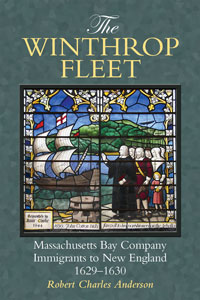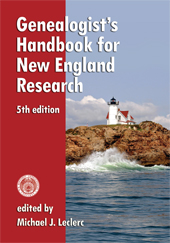 More than the other New England states, Connecticut has kept its records in a variety of jurisdictions. Probate records can be particularly difficult to navigate. For Connecticut Colony, after 1639, estates were in the jurisdiction of the Particular Court (sometimes called the “Quarterly Court”). The Particular Courts were abolished with the new colony charter in 1662 and replaced by the Court of Assistants. Continue reading Navigating Connecticut probate and court records
More than the other New England states, Connecticut has kept its records in a variety of jurisdictions. Probate records can be particularly difficult to navigate. For Connecticut Colony, after 1639, estates were in the jurisdiction of the Particular Court (sometimes called the “Quarterly Court”). The Particular Courts were abolished with the new colony charter in 1662 and replaced by the Court of Assistants. Continue reading Navigating Connecticut probate and court records
Category Archives: Research Methods
Organizing a family reunion: Part One
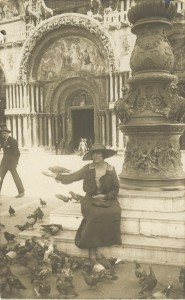
My mother used to say, wistfully, “You’re always writing about your father’s family; I wish you would write about mine.” Vita Brevis readers will remember the posts on my Great-Grandfather Glidden and the fruitful search for his photograph; with this post, I trust I will begin paying down the arrears on my mother’s mother’s mother’s family, the Bouchers.
My great-grandmother Pauline Boucher (1875–1964) was the sixteenth of the twenty-three children born in Baltimore to her father, William Boucher, Jr. (1822–1899), and the seventh of the fourteen born to her mother, Mary Frances (Giles) Boucher (1843–1923). While the size of the family is impressive, I should note that about half the children died young, and only one child of Boucher’s first marriage (to Mary Agnes O’Brien) lived to grow up and marry. This was Francis Xavier Boucher (1854–1927), who was thirty-three years older than the last-born child, Constance Marie (Boucher) Burch (1887–1977). Nine of the Boucher children married, but only five – Frank Boucher, Josephine Stone, Gertrude Donovan, Pauline Glidden, and Constance Burch – have living descendants. Continue reading Organizing a family reunion: Part One
Blue prints, building codes, and inspections
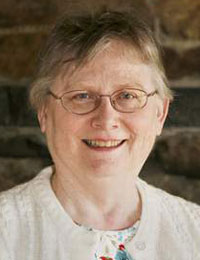 Okay, so now we have a pile of bricks. Are we ready to start building our genealogical house? No. We need to know what the house is supposed to look like (blue prints) and the regulations about how the house should be constructed (codes). If we were really building a house, of course, this is where we’d hire an architect and a contractor, but the fun of genealogy is in doing-it-oneself, so we have to educate ourselves about construction. Continue reading Blue prints, building codes, and inspections
Okay, so now we have a pile of bricks. Are we ready to start building our genealogical house? No. We need to know what the house is supposed to look like (blue prints) and the regulations about how the house should be constructed (codes). If we were really building a house, of course, this is where we’d hire an architect and a contractor, but the fun of genealogy is in doing-it-oneself, so we have to educate ourselves about construction. Continue reading Blue prints, building codes, and inspections
Returning to my ancestral home in Nova Scotia
 My actual hometown is seventeen miles south of Boston; I have called Stoughton my home since birth, and as a genealogist I can claim a variety of ancestral home towns or villages. Genealogically speaking, however, I feel most at home in Nova Scotia, Canada.
My actual hometown is seventeen miles south of Boston; I have called Stoughton my home since birth, and as a genealogist I can claim a variety of ancestral home towns or villages. Genealogically speaking, however, I feel most at home in Nova Scotia, Canada.
My paternal great-grandfather, James Albert George Lambert of Halifax (1846-1928), was for many years my genealogical brick wall. Back in the 1980s and 1990s I spent countless hours writing letters and going online, but these searches never allowed me to leap over that brick wall. Continue reading Returning to my ancestral home in Nova Scotia
A genealogical jigsaw puzzle
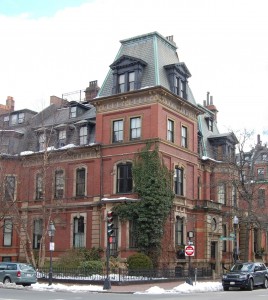
If you are familiar with Boston’s Back Bay, you have probably wondered who lived in a given house when it was first built, or how it has changed and been used over the years. Do you have an ancestor or relative who lived in the Back Bay and wonder about where he or she lived? If so, there’s a website that might answer at least some of those questions. Continue reading A genealogical jigsaw puzzle
Ships of the Winthrop Migration, 1629-1630
The Massachusetts Bay Company arranged for six vessels to sail for New England in 1629, only five of which reached their destination. The salient details for each of these sailings are summarized below:
George Bonaventure, Thomas Cox, master. She left the Isle of Wight 4 May 1629, and probably reached Salem during the first half of July. Samuel Sharp and the Rev. Samuel Skelton were two of the passengers. Continue reading Ships of the Winthrop Migration, 1629-1630
Learning from our mistakes
We often learn from our mistakes. A promise that “I won’t do that again” can be a valuable tool. And, if repeated enough times, it becomes known as experience.
A decade ago I had a luncheon talk entitled “My Ten Worst Mistakes in Genealogy.” When the title appeared, Robert Charles Anderson commented, “and he updates it frequently!” In fact, I do update it, but now I separate the mistakes that did not appear in print or in a lecture from those that did. And I’m glad to say the former far outweigh the latter. Continue reading Learning from our mistakes
Genealogical building blocks
 A master mason can “butter” a brick and add it to a straight and true wall in a matter of seconds. He learns to do this through repeated practice, laying thousands of bricks in hundreds of walls.
A master mason can “butter” a brick and add it to a straight and true wall in a matter of seconds. He learns to do this through repeated practice, laying thousands of bricks in hundreds of walls.
In genealogy we deal with bricks that we call primary, secondary, and circumstantial evidence. A house made entirely of primary bricks is the strongest, but those bricks are often hard to find and expensive. Most of us have houses made from primary and secondary bricks that are perfectly sound. A house of only secondary bricks is substandard to modern building code. Circumstantial bricks are kept for building flying buttresses to hold up wobbly walls. Continue reading Genealogical building blocks
Voices from the sixteenth and seventeenth centuries
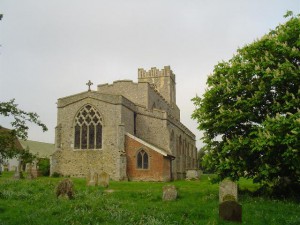
One of my current projects is a new genealogy of the Winthrop family of Suffolk in England and then Massachusetts Bay in New England. I am in the process of reading through the Winthrop Papers, a six-volume collection of documents associated with the family in England and America – including many letters by family members, friends, and associates – during the sixteenth, seventeenth, and eighteenth centuries. Of particular interest in Volume 1 is the diary kept by AdamA Winthrop (1548–1623), the father of Governor John1 Winthrop of Massachusetts Bay. Continue reading Voices from the sixteenth and seventeenth centuries
A shopping list of technological and genealogical resources
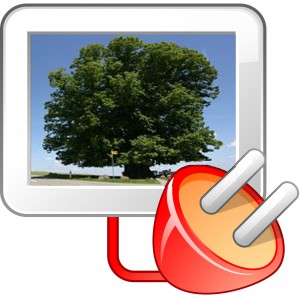 As I was pulling together information for my upcoming April presentation, “Genealogy on the Go: Mobile Tools to Manage Your Discoveries,” I started thinking about how genealogy and technology go hand-in-hand these days – but that finding out more about the technology part, besides its application to genealogy, can sometimes be confusing for beginning users. Here are some places online I think would be helpful in finding tech information and news, as well as kin and research allies! Continue reading A shopping list of technological and genealogical resources
As I was pulling together information for my upcoming April presentation, “Genealogy on the Go: Mobile Tools to Manage Your Discoveries,” I started thinking about how genealogy and technology go hand-in-hand these days – but that finding out more about the technology part, besides its application to genealogy, can sometimes be confusing for beginning users. Here are some places online I think would be helpful in finding tech information and news, as well as kin and research allies! Continue reading A shopping list of technological and genealogical resources
